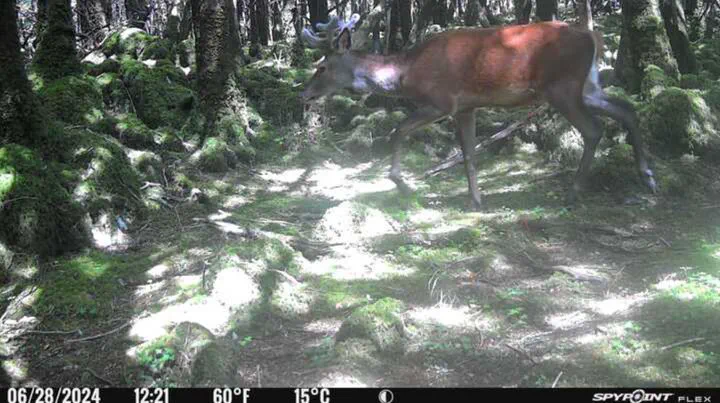Estimating Wildlife Activity Using Camera Traps

Sika (Cervus nippon) and red deer (Cervus elaphus) have been identified as problematic to the restoration and management of the yew wood at Reenadinna, which is a priority habitat for conservation in Killarney National Park.
Information on the relative abundance and activity of deer in the woodland and across the park is essential in order to design and implement successful management strategies. Information on abundance can be obtained by complete counts but, as deer regularly move over large distances seasonally and daily, this is logistically difficult to obtain. Other methods involving the estimation of deer numbers based on the rate at which they produce faecal pellets (e.g., FAR faecal accumulation rate) are commonly used to provide estimates of deer density. These methods rely on accurate identification of pellets and sufficient sampling of large areas and thus require a great deal of personnel time. In addition, the decomposition rate of pellets in different weather conditions and across varying habitats is another complicating factor. Moreover, information on activity and habitat selection within the woodlands and neighbouring ecosystems is necessary for planning management and ensure forest regeneration.
Over the last number of years a range of enumeration methods involving the use of camera traps have been developed for a range of wildlife species that can provide information on both, abundance and habitat use. Using camera traps has the advantage of continuous non-invasive monitoring (traps can be set to detect over 24 hours), over extended periods and over large areas. KNP has acquired 30 camera traps and it is proposed to use these traps to gain insights into the activity of deer across the peninsula.
This project is being led by Colm Breslam as part of his master study at UCC.